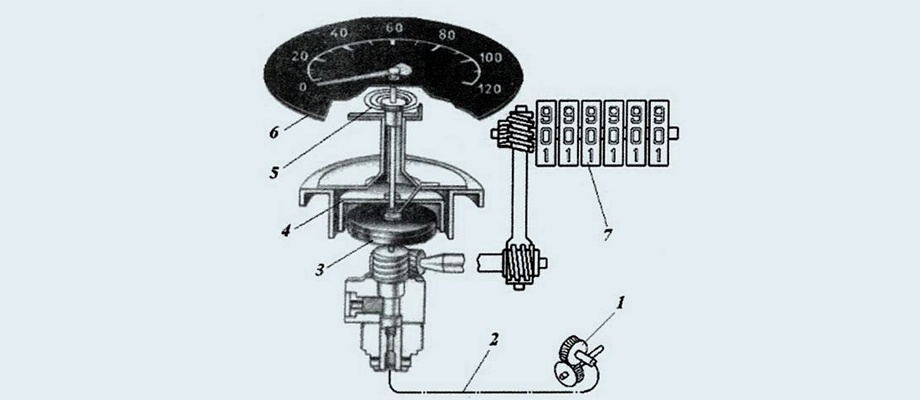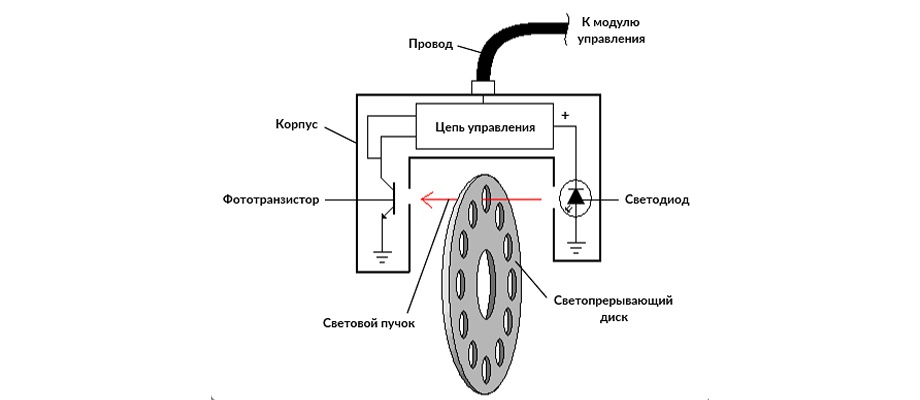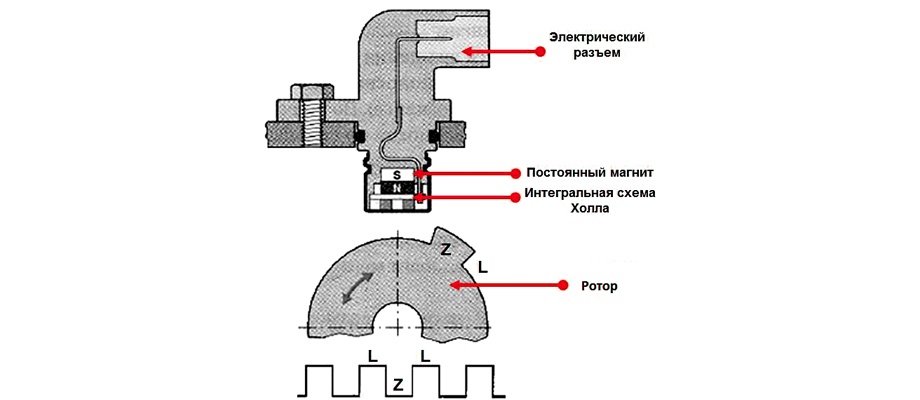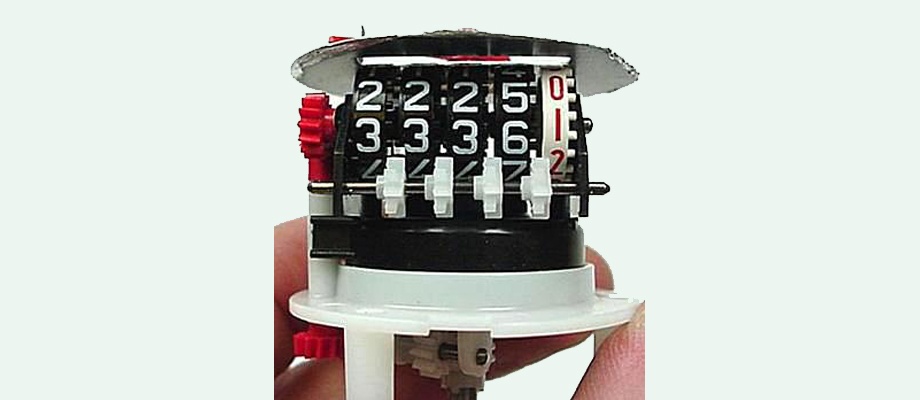
Mechanical and electronic speedometer. Device and principle of operation
It is no coincidence that the speedometer is located in the most prominent place on the dashboard of the car. After all, this device shows how fast you are driving, and allows you to control compliance with the permissible speed limit, which directly affects road safety. Let's not forget about speeding tickets, which can be avoided if you periodically glance at the speedometer. In addition, on country roads with the help of this device, you can save fuel if you maintain the optimal speed at which fuel consumption is minimal.
The mechanical speed meter was invented over a hundred years ago and is still widely used in vehicles today. The sensor here is usually a gear that meshes with a special gear on the secondary shaft. In front-wheel drive vehicles, the sensor can be located on the axis of the drive wheels, and in all-wheel drive vehicles, in the transfer case.

As a speed indicator (6) on the dashboard, a pointer device is used, the operation of which is based on the principle of magnetic induction.
The transmission of rotation from the sensor (1) to the speed indicator (actually the speedometer) is carried out using a flexible shaft (cable) (2) from several twisted steel threads with a tetrahedral tip at both ends. The cable rotates freely around its axis in a special plastic protective sheath.
The actuator consists of a permanent magnet (3), which is mounted on a drive cable and rotates with it, and an aluminum cylinder or disk (4), on the axis of which the speedometer needle is fixed. The metal screen protects the structure from the effects of external magnetic fields, which could distort the readings of the device.
The rotation of a magnet induces eddy currents in a non-magnetic material (aluminum). Interaction with the magnetic field of a rotating magnet causes the aluminum disk to rotate as well. However, the presence of a return spring (5) leads to the fact that the disk, and with it the pointer arrow, only rotates through a certain angle proportional to the speed of the vehicle.
At one time, some manufacturers tried to use tape and drum-type indicators in mechanical speedometers, but they turned out to be not very convenient, and they were eventually abandoned.

Despite the simplicity and quality of mechanical speedometers with a flexible shaft as a drive, this design often gives a rather large error, and the cable itself is the most problematic element in it. Therefore, purely mechanical speedometers are gradually becoming a thing of the past, giving way to electromechanical and electronic devices.
The electromechanical speedometer also uses a flexible drive shaft, but the magnetic induction speed assembly in the device is arranged differently. Instead of an aluminum cylinder, an inductor is installed here, in which an electric current is generated under the influence of a changing magnetic field. The higher the speed of rotation of the permanent magnet, the greater the current flowing through the coil. A pointer milliammeter is connected to the coil terminals, which is used as a speed indicator. Such a device allows you to increase the accuracy of readings compared to a mechanical speedometer.
In an electronic speedometer, there is no mechanical connection between the speed sensor and the device in the dashboard.
The high-speed unit of the device has an electronic circuit that processes the electrical pulse signal received from the speed sensor through the wires and outputs the corresponding voltage to its output. This voltage is applied to a dial milliammeter, which serves as a speed indicator. In more modern devices, the stepper ICE controls the pointer.
As a speed sensor, various devices are used that generate a pulsed electrical signal. Such a device can be, for example, a pulse inductive sensor or an optical pair (light emitting diode + phototransistor), in which the formation of pulses occurs due to interruption of light communication during rotation of a slotted disk mounted on a shaft.

But, perhaps, the most widely used speed sensors, the principle of operation of which is based on the Hall effect. If you place a conductor through which a direct current flows in a magnetic field, then a transverse potential difference arises in it. When the magnetic field changes, the magnitude of the potential difference also changes. If a driving disk with a slot or ledge rotates in a magnetic field, then we get an impulse change in the transverse potential difference. The frequency of the pulses will be proportional to the speed of rotation of the master disk.

To display speed instead of a pointer It happens that a digital display is used. However, constantly changing numbers on the speedometer set are worse perceived by the driver than the smooth movement of the arrow. If you enter a delay, then the instantaneous speed may not be displayed quite accurately, especially during acceleration or deceleration. Therefore, analog pointers still prevail in speedometers.
Despite the constant technological progress in the automotive industry, many note that the accuracy of speedometer readings remains not very high. And this is not the fruit of the overactive imagination of individual drivers. A small error is deliberately laid down by manufacturers already in the manufacture of devices. Moreover, this error is always in the big direction, in order to exclude situations when, under the influence of various factors, the speedometer readings will be lower than the possible speed of the car. This is done so that the driver does not accidentally exceed the speed, guided by incorrect values on the device. In addition to ensuring safety, manufacturers also pursue their own interest - they seek to exclude lawsuits from disgruntled drivers who received a fine or got into an accident due to false speedometer readings.
The error of speedometers, as a rule, is non-linear. It is close to zero at about 60 km/h and gradually increases with speed. At a speed of 200 km / h, the error can reach up to 10 percent.
Other factors also affect the accuracy of readings, such as those associated with speed sensors. This is especially true of mechanical speedometers, in which the gears gradually wear out.
Often, the owners of the cars themselves introduce an additional error by setting the size of which differs from the nominal. The fact is that the sensor counts the revolutions of the gearbox output shaft, which are proportional to the revolutions of the wheels. But with a reduced tire diameter, the car will travel a shorter distance in one revolution of the wheel than with tires of a nominal size. And this means that the speedometer will show a speed that is overestimated by 2 ... 3 percent compared to the possible one. Driving with underinflated tires will have the same effect. Installing tires with an increased diameter, on the contrary, will cause an underestimation of the speedometer readings.
The error may turn out to be completely unacceptable if, instead of a regular one, you install a speedometer that is not designed to work in this particular car model. This must be taken into account if it becomes necessary to replace a faulty device.
The odometer is used to measure the distance travelled. It should not be confused with the speedometer. In fact, these are two different devices, which are often combined in one case. This is explained by the fact that both devices, as a rule, use the same sensor.
In the case of using a flexible shaft as a drive, the transmission of rotation to the input shaft of the odometer is carried out through a gearbox with a large gear ratio - from 600 to 1700. Previously, a worm gear was used, with which gears with numbers rotated. In modern analog odometers, the rotation of the wheels is controlled by stepper motors.

Increasingly, you can find devices in which the mileage of the car is displayed digitally on a liquid crystal display. In this case, information about the distance traveled is duplicated in the engine control unit, and it happens that in the car's electronic key. If you wind up a digital odometer programmatically, a forgery can be quite simply detected through computer diagnostics.
If there are problems with the speedometer, in no case should they be ignored, they must be fixed immediately. It's about your safety and that of other road users. And if the reason lies in a faulty sensor, then problems may also arise, since the engine control unit will regulate the operation of the unit based on incorrect speed data.
